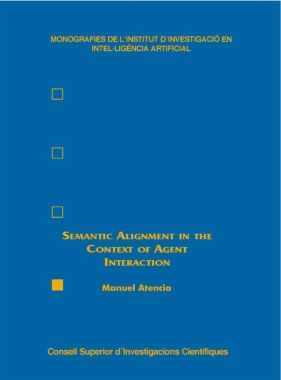We provide the formal foundation of a novel approach to tackle semantic heterogeneity in multi-agent communication by looking at semantics related to interaction in order to avoid dependency on a priori semantic agreements. We do not assume existence of any ontologies, neither local to interacting agents nor external to them, and we rely only on interactions themselves to resolve terminological mismatches. In the approach taken in this paper we look at the semantics of messages that are exchanged during an interaction entirely from an interaction-specific point of view: messages are deemed semantically related if they trigger compatible interaction state transitions—where compatibility means that the interaction progresses in the same direction for each agent, albeit their partial view of the interaction (their interaction model) may be more constrained than the actual interaction that is happening. Our underlying claim is that semantic alignment is often relative to the particular interaction in which agents are engaged in, and, that in such cases the interaction state should be taken into account and brought into the alignment mechanism.
- Cover
- Title page
- Copyright page
- Contents
- List of Figures
- List of Tables
- Foreword
- Abstract
- Agradecimientos
- Acknowledgements
- Chapter 1. Introduction
- 1.1 The Semantic Heterogeneity Problem
- 1.2 Motivation of the Thesis
- 1.3 Contributions
- 1.4 Outline of the Thesis
- 1.5 Publications
- Chapter 2. Semantic Interoperability
- 2.1 About Ontologies
- 2.2 Ontology Matching
- 2.3 The Case of Multiagent Systems
- 2.4 Summary and Concluding Remarks
- Chapter 3. A Formal Framework for Situated Semantic Alignment
- 3.1 Situated Semantic Alignment
- 3.2 The Logic of Situated Semantic Alignment
- 3.3 Approaching the logic of SSA
- 3.4 Summary and Concluding Remarks
- Chapter 4. I-SSA: Interaction-Situated Semantic Alignment
- 4.1 Introduction
- 4.2 A Running Example: the Blackjack Game
- 4.3 Interaction Models
- 4.4 I-SSA Insights
- 4.5 I-SSA Formalisation
- 4.6 I-SSA Dynamics
- 4.7 I-SSA as a Particular Case of SSA
- 4.8 Summary and Concluding Remarks
- Chapter 5. I-SSA Implementation and Experimentation
- 5.1 Introduction
- 5.2 Experiment Design
- 5.3 Execution and Evaluation
- 5.4 Statistical Analysis
- 5.5 Summary and Concluding Remarks
- Chapter 6. A Case Study: Travel Reservation
- 6.1 Introduction
- 6.2 Online Travel Reservation
- 6.3 The Travel Reservation Scenario
- 6.4 I-SSA Solution
- 6.5 Comparison with other Techniques
- 6.6 Summary and Concluding Remarks
- Chapter 7. General Conclusions and Further Work
- 7.1 Theoretical Implications
- 7.2 Practical Implications
- 7.3 Philosophical Implications
- 7.4 Further Work
- Appendix A. Channel Theory
- Appendix B. Travel Ontologies
- Bibliography

